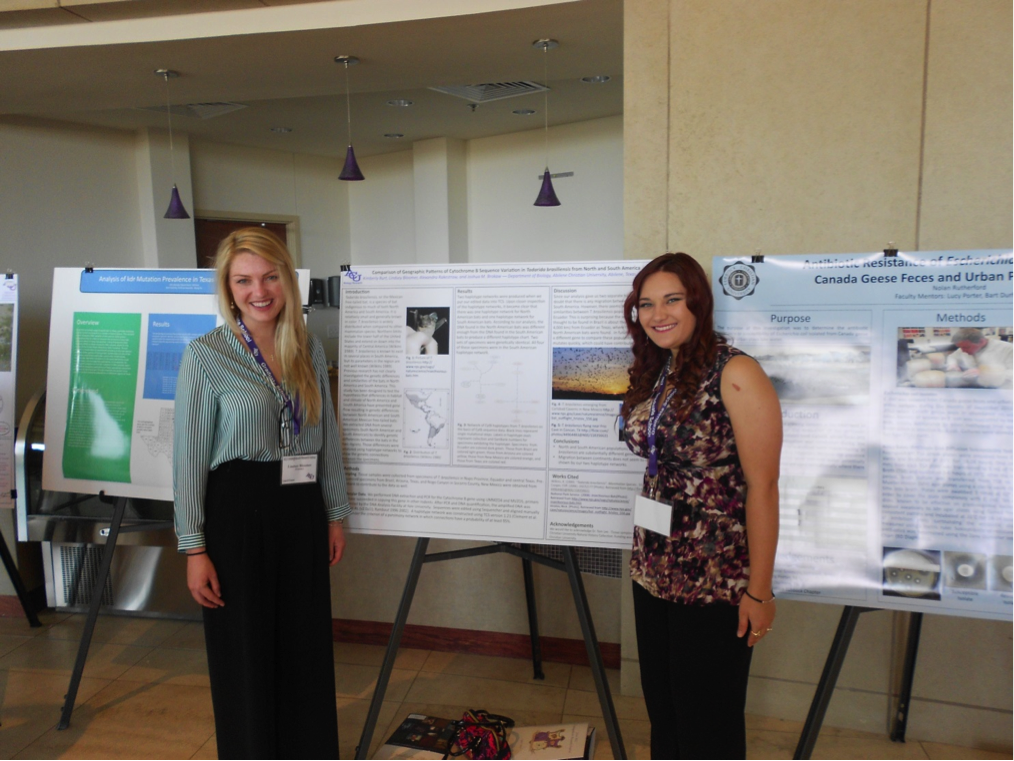I began research with Dr. Brokaw and Dr. Lee at the beginning of Fall 2013. They wanted to start an entirely new project with me, so a lot of the beginning stages were simply figuring out what to research. Our options were really between rats and bats that Dr. Lee had collected. So, we went down to the natural history collection and looked at what species Dr. Lee had collected a lot of. He had a lot of Mexican free-tailed bats, or Tadarida brasiliensis, that he had been wanting to do a project with, so we ended up designing an experiment around that. Since he had samples from both Ecuador and Texas, two geographically distinct areas, we decided to see if there was any genetic variation between the two populations. Dr. Brokaw taught me DNA extraction and PCR first. However, we had quite a bit of trouble getting a good PCR for the majority of the experiment. After months of not being able to figure out what I was doing wrong, Dr. Brokaw was finally able to confirm that some of the chemicals I had been using were degraded. Once we fixed that problem, my PCRs worked fine. We cleaned and nanodropped (measured the concentration) the DNA from the cytochrome b gene before sending it off to another lab to be sequenced. Somewhere along the line, I also acquired a couple of research partners on the project. However, we usually worked on different schedules and got back together to share results. At the beginning of the spring semester, I finally met my partner that I continued to work with, Lindsey Bloomer (our other partner is currently on study abroad). Another road block that we had involved one of the coolers in the lab breaking down several years ago. It turned out that many of our DNA samples from Texas got ruined when they had thawed, and we only had one sequenced sample from Texas. We had to push our project to the very last minute to fix this. I literally finished the last set of DNA extraction, cleaning, and nanodropping all in two weeks. Luckily, we got four more sequences from Texas thanks to samples from the natural history collection at Angelo State University. Towards the end of the project, we edited the sequences and constructed a haplotype network of the cytochrome b sequences from different samples, which gave us some very interesting results. The bats from North America were put into a completely different network than the bats from South America (at this point, I had pulled some additional sequences from GenBank to compare to our new samples). Overall, we ended up deciding that the Texan bats probably did not migrate to South America and vice versa because there were no shared or even similar haplotypes in both locations. We plan to continue this research next year with the focus on a different gene that mutates a bit slower to find similarities between to two groups. My favorite parts of the project were trying to extract DNA from a bat foot and being asked by Dr. Lee to look for a sick bat that someone had reported was lying on the ground by the library. I really enjoyed learning from my wonderful mentors, and I am really excited for next year.
-
Recent Research Blog Posts
Research Blog Posts By Topic
- Biogeography
- Biomedical
- Bioremediation
- Conference
- Conservation Biology
- DNA
- Ecology
- Entomology
- Environmental Science
- Evolution
- Genetics
- Mammalogy
- Microbiology
- Molecular Biology
- Morphology
- Organic Chemistry
- PCR
- Phylogeny
- Phylogeography
- Plant Biology
- Polyploidy
- Research
- Rhoden Farm
- Rolling Plains
- Systematics
- Wildlife
Research Blog Posts By Lab Group
ACU Blogs links

